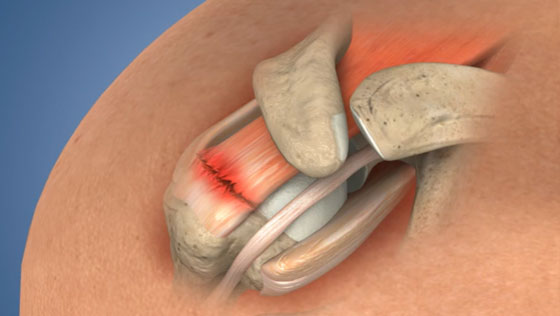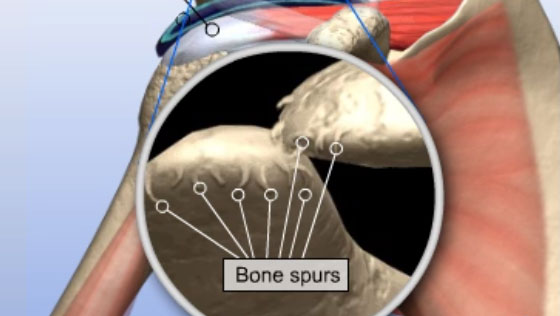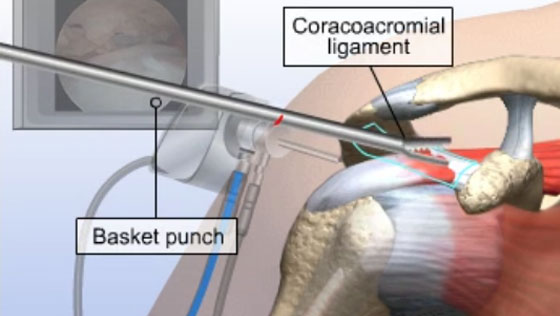What is Partially Torn Rotator Cuff Repair?
Surgical repair may be necessary for partial rotator cuff tears in order to trim the torn rotator cuff tendon, restoring shoulder function.
Key statistics about Partially Torn Rotator Cuff Repair
- Approximately 4.5 million patient visits that are associated with shoulder pain occur annually in the United States[1]
- Approximately 250,000 rotator cuff repairs are performed each year in the United States[1]
- 13% of individuals over the age of 50 experience rotator cuff tears[2]
- 50% of individuals over the age of 80 experience rotator cuff tears[2]
- 60-88% of individuals who undergo rotator cuff repair experience complete tendon healing[2]
Expert Insights
Signs You Need Rotator Cuff Surgery - J. Field Scovell, III, MD
Shoulder Anatomy
The shoulder is a ball-and-socket joint formed by three bones: the humerus, the scapula, and the clavicle.

The rotator cuff is made up of a group of four tendons and muscles that surround the shoulder joint. These muscles are the subscapularis, the supraspinatus, the infraspinatus, and the teres minor, and together they work to stabilize the joint and move the arm.

Why is Partially Torn Rotator Cuff Repair performed?
There are two main categories of rotator cuff tears: partial tears and full tears. Rotator cuff tears occur when at least one of the cuff tendons is torn, fully or partially detaching the muscle from the humerus.
A partially torn rotator cuff may require surgical repair to trim the torn tendon if the tear causes shoulder pain and affects shoulder function.
Who needs Partially Torn Rotator Cuff Repair?
Rotator cuff tears are most commonly the result of repetitive movement from participation in throwing sports and weight lifting, or by traumatic injury such as a fall.
Rotator cuff repair is a surgical procedure that may be performed to address tears that cannot be treated with nonsurgical measures.
How is Partially Torn Rotator Cuff Repair performed?
Surgical repair techniques vary depending upon a surgeon’s preference, the severity of the tear, the tissue quality, and a patients’ individual anatomy. These techniques include open repair, mini-open repair, and arthroscopic repair. During an arthroscopic repair:
- The surgeon will make small incisions around the shoulder joint and the arthroscope will be inserted into one of the incisions.
- Saline solution is pumped into the joint to expand it and improve visualization.
- Images from the arthroscope are sent to a video monitor where the surgeon can see inside the joint.
- Any damaged bone or bone spurs are removed.
- The torn edges of the tendon are trimmed and smoothed using a shaver.
- Finally, the saline solution is drained, instruments are removed, and the incisions are closed using sutures.
What are the risks of Partially Torn Rotator Cuff Repair?
Potential risks from partially torn rotator cuff repair may include:
- Infection
- Nerve damage
- Shoulder stiffness
- Recurrent tears
How long does it take to recover from Partially Torn Rotator Cuff Repair?
-
24 hours after surgery
Most patients are able to return home the same day as their procedure, and pain medication may be prescribed. A sling will be provided, but it is important that prescribed exercises are followed in order to prevent the development of any weakness or stiffness. - 1 week after surgery A physical therapy routine will be established by the surgeon and physical therapist.
-
2 weeks after surgery
Any non-dissolvable sutures are removed and bruising and swelling begin to subside. -
12 weeks after surgery
Most patients are able to resume most daily activity. -
4-6 months after surgery
Most patients are fully recovered from partially torn rotator cuff repair, though it may take some patients up to 12 months to fully recover.
What are the results of Partially Torn Rotator Cuff Repair?
Partially torn rotator cuff repair is a safe and effective procedure performed to alleviate pain and restore shoulder function to patients with partially torn rotator cuff tendons. 60-88% of individuals who undergo rotator cuff repair experience complete tendon healing[2].
Find an Orthopedic Doctor in Your Area





